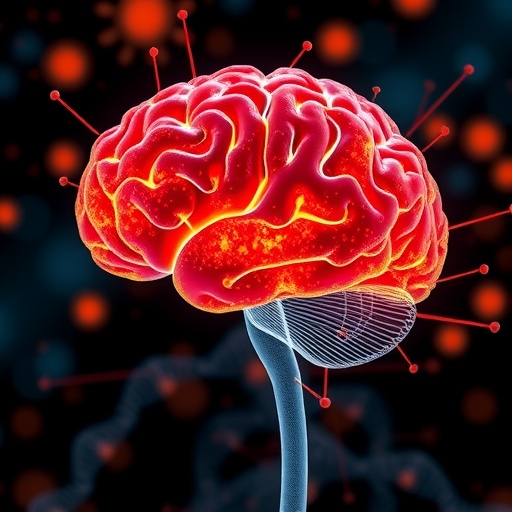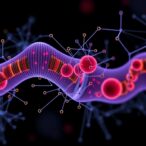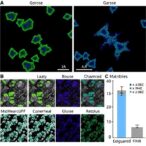
In recent years, the complex interplay between genetics and early-life experiences has been a focal point in neuroscience and psychology. A groundbreaking study led by Lu, H., Rolls, E.T., Liu, H., and colleagues, published in Nature Communications, has unveiled compelling evidence suggesting that specific brain markers associated with resilience to childhood trauma are modulated by genetic risk factors. This pioneering research not only bridges the gap between genetic predispositions and neural responses to adverse experiences but also opens new avenues for tailored interventions aimed at fostering psychological resilience.
Childhood trauma, encompassing physical, emotional, or sexual abuse, alongside neglect, has long been known to have profound and enduring effects on brain development and mental health. Yet, intriguingly, not all individuals exposed to such adversity go on to develop psychiatric disorders or cognitive impairments. This heterogeneity has prompted scientists to investigate the underlying biological mechanisms that confer resilience, the ability to adapt and thrive despite early adversity. The study by Lu and colleagues delves deep into this phenomenon by integrating genetic risk profiling with advanced neuroimaging techniques to identify brain markers predictive of individual resilience trajectories.
Central to this research was the use of polygenic risk scores (PRS), which quantify the cumulative effect of multiple genetic variants linked to psychiatric disorders such as depression, anxiety, and post-traumatic stress disorder (PTSD). By stratifying participants based on their genetic vulnerability, the authors could discern differential brain responses to childhood trauma across risk categories. This approach leverages the power of genome-wide association studies (GWAS) data and addresses the multifaceted genetic architecture of mental health disorders, moving beyond candidate gene studies that often yield inconsistent results.
.adsslot_715tJNMIBC{ width:728px !important; height:90px !important; }
@media (max-width:1199px) { .adsslot_715tJNMIBC{ width:468px !important; height:60px !important; } }
@media (max-width:767px) { .adsslot_715tJNMIBC{ width:320px !important; height:50px !important; } }
ADVERTISEMENT
The neuroimaging component of the study employed high-resolution functional magnetic resonance imaging (fMRI) alongside structural MRI to map both functional connectivity and morphometric features of brain regions implicated in emotional regulation, stress response, and cognitive control. Areas such as the prefrontal cortex, amygdala, hippocampus, and anterior cingulate cortex were of particular interest given their established roles in processing trauma-related cues and mediating resilience mechanisms. The imaging data were analyzed using sophisticated machine learning algorithms capable of detecting subtle patterns related to genetic risk and trauma exposure.
Findings revealed that individuals with higher genetic risk exhibited distinct neural signatures compared to those with lower risk scores. Specifically, the high-risk group demonstrated altered functional connectivity between the amygdala and prefrontal cortex, suggesting impaired top-down regulation of emotion. Conversely, individuals with lower genetic risk showed enhanced connectivity patterns correlating with adaptive coping and reduced symptomatology. Structural analyses further revealed volumetric differences in the hippocampus, a region critical for memory formation and stress regulation, which were modulated by the interaction between trauma history and genetic vulnerability.
Beyond regional brain differences, the study also identified network-level alterations indicative of resilience. Resilient individuals, despite comparable trauma exposure, displayed stronger integration within the default mode network (DMN) and salience network (SN), neural circuits implicated in self-referential processing and detection of salient stimuli, respectively. These enhanced network dynamics may underlie effective self-regulatory capacities and emotional awareness, acting as protective neurobiological substrates.
This research is notable not only for its technical rigor but also for its methodological innovations. By combining polygenic risk scoring with multimodal neuroimaging and advanced computational analyses, the study exemplifies a cutting-edge systems neuroscience approach. This integrative framework allows for disentangling the complex gene-environment interplay that shapes brain architecture and function in the context of psychopathology risk and resilience.
Importantly, the authors discuss the translational implications of their findings. Identifying genetic risk-dependent brain markers opens the door for precision medicine strategies in mental health. For example, individuals identified as genetically vulnerable yet displaying early neural signatures of resilience could be targeted for specific cognitive-behavioral therapies designed to reinforce adaptive neural pathways. Similarly, those showing maladaptive brain patterns might benefit from early pharmacological or neuromodulatory interventions aimed at mitigating risk before clinical symptoms emerge.
On a broader scale, this study contributes crucial insights into the neurobiological substrates of resilience, challenging deterministic views that early trauma inexorably leads to psychiatric illness. Instead, it supports a dynamic model where genetic background and brain plasticity interact to produce diverse outcomes. Such a perspective encourages policies and preventive programs that focus not only on mitigating trauma exposure but also on enhancing resilience through supportive environments and interventions.
The study’s comprehensive dataset also sets a foundation for future inquiries. Longitudinal follow-ups will be essential to track how these brain markers evolve across developmental stages and interact with ongoing environmental influences. Additionally, expanding the genetic analysis to include epigenetic modifications and gene expression profiles could enrich understanding of the molecular cascades underpinning resilience.
Critically, the research addresses potential confounders and methodological challenges thoughtfully, including demographic variables, socioeconomic factors, and comorbidities. By employing rigorous statistical controls and validation cohorts, the findings gain robustness, though replication in larger, more ethnically diverse samples will be crucial to generalize the conclusions.
The timing of this study is particularly apt considering the global increase in childhood adversities exacerbated by socio-economic disruptions and the ongoing pandemic-related stressors. Understanding the neurogenetic mechanisms of resilience is imperative for designing public health interventions that promote mental well-being across vulnerable populations.
Moreover, the identification of specific brain circuits involved in genetic risk-dependent resilience offers promising targets for emerging interventions such as transcranial magnetic stimulation (TMS) or neurofeedback. Such strategies hold potential for directly modulating neural activity to enhance adaptive processing in individuals exposed to early trauma.
The study’s interdisciplinary nature, integrating genetics, neuroimaging, psychology, and computational modeling, exemplifies the future of neuroscience research focused on complex human traits. It demonstrates how big data and precision analytics can unravel the biological underpinnings of resilience, paving the way for novel therapeutic paradigms.
In sum, Lu, Rolls, Liu, and their colleagues have significantly advanced our comprehension of how genetic predisposition shapes brain responses to childhood trauma and contributes to resilience. Their findings underscore the importance of personalized approaches in mental health and herald a new era in which neurobiological markers guide prevention and treatment strategies, ultimately transforming outcomes for countless individuals affected by early adversities.
As the field progresses, integrating these insights with behavioral and environmental data will further enrich models of resilience. The promise lies in translating this knowledge into actionable frameworks that empower individuals to overcome the scars of trauma and achieve psychological flourishing.
Subject of Research: Genetic risk-dependent brain markers of resilience to childhood trauma
Article Title: Genetic risk-dependent brain markers of resilience to childhood Trauma
Article References:
Lu, H., Rolls, E.T., Liu, H. et al. Genetic risk-dependent brain markers of resilience to childhood Trauma. Nat Commun 16, 6219 (2025). https://doi.org/10.1038/s41467-025-61471-0
Image Credits: AI Generated
Tags: adverse childhood experiences and outcomesbiological mechanisms of resiliencebrain markers of resiliencebridging genetics and psychologychildhood trauma and brain developmentgenetic predispositions to psychiatric disordersgenetic risk factors in mental healthindividual differences in resilienceneuroimaging techniques in psychologyneuroscience of trauma adaptationpolygenic risk scores in neurosciencepsychological resilience interventions



